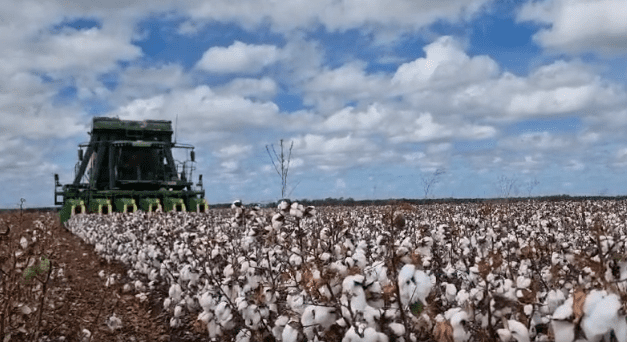
QUEENSLAND University of Technology will lead a project aiming to reduce greenhouse gas emissions from cotton production systems after receiving a combined $2.8 million in grant funding from the Australian Government and the Cotton Research and Development Corporation.
The project was recently announced as a beneficiary of a $1.985M grant from the Australian Government’s Climate-Smart Agriculture Program Partnerships and Innovation Grants Round.
The CRDC will contribute a further $800,000 towards the project.
Principal researcher Peter Grace, from QUT’s School of Biology and Environmental Science and Centre for Agriculture and the Bioeconomy said a key objective of the project, Climate Smart Cotton – reducing nitrous oxide emissions with enhanced efficiency fertilisers was to demonstrate to cotton farmers that use of enhanced efficiency fertilisers (EEFs) would significantly reduce their emissions of nitrous oxide.
“Nitrous oxide is a potent soil-borne greenhouse gas, produced from the application of nitrogen sources, mainly mineral fertilisers, to increase crop production,” Professor Grace said.
“EEFs are designed to maximise the amount of nitrogen available and reduce the losses of nitrogen, thereby reducing global warming and water pollution.
“Australia’s cotton industry is primarily irrigated and has traditionally not used EEFs, however, we have evidence from grains cropping that an 80 per cent reduction in emissions could be achieved in cotton production with the use of EEFs.”
Prof Grace said the project would work directly with the cotton industry and could have application in other irrigated crops, such as maize, wheat and rice and potentially horticulture.
“Increased nitrogen efficiency will lower the amount needed per unit of fibre or grain, reduce costs and increase profitability.
“Cotton manufacturers will pay a premium for low carbon fibre, also contributing to greater profit for producers.”
Under the Partnerships and Innovation grant program, a total of $45M was available over four years for medium-to-large scale projects to drive the development and adoption of climate-smart tools and farm practices that increase the agriculture sector’s productivity and profitability.
Prof Grace said QUT is partnering with state governments, the CRDC and companies with a long history of the sustainable management of Australia’s cotton industry.
“The consortium has developed over 20 years, with QUT collaborating with CRDC, CottonInfo and the NSW Department of Primary Industries and Incitec Pivot Fertiliser to determine the on-farm emissions of nitrous oxide from cotton production across Australia.
“We are collaborating with Nutrien Ag Solutions, a multi-national enterprise which provides expert agronomic services for effective nitrogen fertiliser management and has strong links to thousands of farmers.
“Fertilizer Australia is the primary industry association representing fertiliser manufacturers and suppliers and distributors supply 95 per cent of the fertiliser used in Australia.”
CRDC innovation broker Nicola Cottee said the project underscored the cotton industry’s commitment to innovation and sustainability.
“Under our CRDC Strategic Plan, Clever Cotton, our goal is to establish a sustainable low-carbon cotton production system,” Ms Cottee said.
“Through our research partnerships, we aim to provide cotton growers with the tools and knowledge they need to reduce their environmental footprint.
“This project is a crucial piece of the puzzle. The potential to achieve a significant reduction in nitrogen fertiliser emissions via EEFs is a game-changer for cotton.
“We’re excited about the potential of this project and the positive impact it will have on our industry and the environment.”
Source: Queensland University of Technology

HAVE YOUR SAY